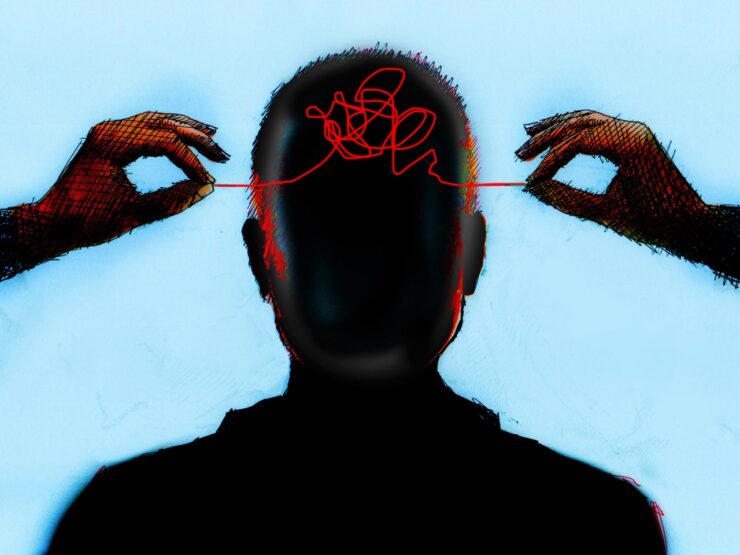Methamphetamine addiction is a menace to not only the user but also their family and community. As an individual with methamphetamine dependence, you are at risk of having long-term health effects, psychiatric and socioeconomic consequences. However, with a comprehensive treatment plan, it is easier to recover from the addiction.
There are a lot of varying treatment options for methamphetamine dependence that recovery centers are using these days. Even though the recovery process is highly dependent on the patient and their individual recovery needs, below are 4 of the most highly effective treatments for meth:
Page Contents
1. Cognitive-behavioral therapy

Cognitive-behavioral therapy, abbreviated as CBT, is a meth treatment option where the user is made to connect with their thoughts, feelings, and actions and how these aspects impact the recovery process. In addition, recovery centers like The Forge Recovery Center have embraced this method since it is integral in helping users resist temptation and maintain lifetime sobriety. Ideally, this treatment option debunks the user’s negative thoughts from past experiences and the environment and helps build a more positive mentality.
The behavioral therapist will closely examine your thought patterns to find the cognitive distortions that act as trigger points for addiction. After that, the specialist will use the following techniques in the treatment of the meth addiction:
- Imagery-based exposure – This technique requires the user to have a vivid thought of a memory that produces negative feelings. The memory should visualize every sound, environment, emotion, and impulse at that particular time and work through why the memory makes them feel negative. Constant remembrance of a painful past can be triggering, but talking through these memories and their significance helps the user reduce any anxiety caused by them.
- Pleasant activity schedule – This technique is focused on scheduling a regular healthy routine of fun activities for the patients. These activities are critical in boosting their spirits and minimizing negative thoughts. Consequently, the urge to use meth will be replaced by healthier, more acceptable activities.
- Thought records – This technique is centered around disapproving negative thoughts in the patient’s mind. After understanding the negative thoughts, an evidence-based argument is given to object to this thought. This will help the user to be easy on themselves and critically evaluate their thinking patterns.
- Behavioral experiments- These experiments aim to compare positive and negative thoughts to find an effective one used in changing a behavior. This technique is personalized to a patient since some effectively respond to criticism and “tough love” while others react better to kindness.
2. The matrix model

Addiction recovery centers use the matrix model to provide meth users with a framework for treatment and abstinence. Typically, the matrix model is an intensive 16-week meth dependence treatment program that integrates behavioral therapy, drug testing, and promotion of non-drug-related activities. In this treatment option, the patient is taught about addiction, relapses, and familiarization with self-help programs such as crystal meth anonymous. All the teachings are done by a trained therapist who doubles up as a teacher and a coach. The relation between the therapist and the patient is a more direct—but not confrontational—relation. This relationship helps the patient to regain their self-esteem, dignity, and self-worth.
The components of the matrix model are;
- Individual therapy sessions- the patient routinely meets with the therapy to check on their progress.
- Early recovery groups – this is focused on patients who have just recovered from meth addiction. The sober individuals all meet to discuss how to deal with the cravings and time management. Furthermore, they serve as accountability partners to each other where they monitor each other’s progress.
- Social support group – This is part of the final stages of the treatment process. The patients make friends with other people who are in recovery and can support each other through struggles that they are all familiar with.
- Family education groups – These groups aim to teach the family members of a recovering addict the biological aspect of addiction, the health effects of meth, and the ripple effect of drug addiction on family members.
- Relapse prevention group – With relapse being a significant setback to the user’s sobriety journey, this group focuses on prevention. The group entails teachings on different topics on changing behaviors and altering thinking patterns to avoid relapses.
3. Aversion therapy

Aversion therapy is a meth dependence treatment option that uses counter-conditioning to stop the addictive cravings for methamphetamine. Similar to cognitive behavioral therapy, aversion therapy is based on the concept that behaviors can be learned and unlearnt. This method pairs up an unpleasant feeling or sensation with the use of meth. Therefore, based on this undesirable consequence, the user does not find pleasure in using meth anymore and subsequently stops abusing the drug. Some of the standard aversion techniques include:
- Electrical aversion- The use of electrical shocks to stop meth addiction.
- Emetic methods – This technique uses medicines that induce nausea and vomiting to make the patient physically nauseous at the idea of using drugs.
- Pharmacological methods involve the use of medications that immediately cause acute illness or discomfort if they interact with meth.
- Sensory methods introduce an unpleasant sensation such as an awful smell or painful touch like snapping of a rubber band.
- Imaginal methods – the technique uses unpleasant visual memories to stop meth use.
In essence, the concept of aversion therapy is based on the behaviorism principle, which is inspired by the idea that human behavior is motivated by natural urges to seek pleasure and avoid pain. Similarly, meth addiction is a result of a similar reward process.
During meth use, the brain activates the production of dopamine hormone, which is the reward hormone. Repetitive use of the drug leads to the formation of pathways to the brain resulting in urges to repeat the behavior hence causing addiction. However, aversion therapy aims to counter-condition this behavior by breaking the reward pathway and punishing the behavior with an unpleasant sensation.
4. Contingency management

Contingency management encompasses giving tangible rewards to the patients to reinforce positive behaviors such as abstinence from meth. The rewards can be in the form of cash or vouchers exchangeable for food, movies, or other services. To receive this incentive, the patient has to provide meth-free urine samples. The more consecutive meth-free urine samples, the higher the incentives. This has proved to prevent meth addiction and bring sobriety for a long time.
Conclusively, recovery from meth addiction requires a holistic approach that is uniquely tailored to each individual. The right treatment plan should be a continuum of care that is inclusive of detox and rehabilitation to prevent relapses.

